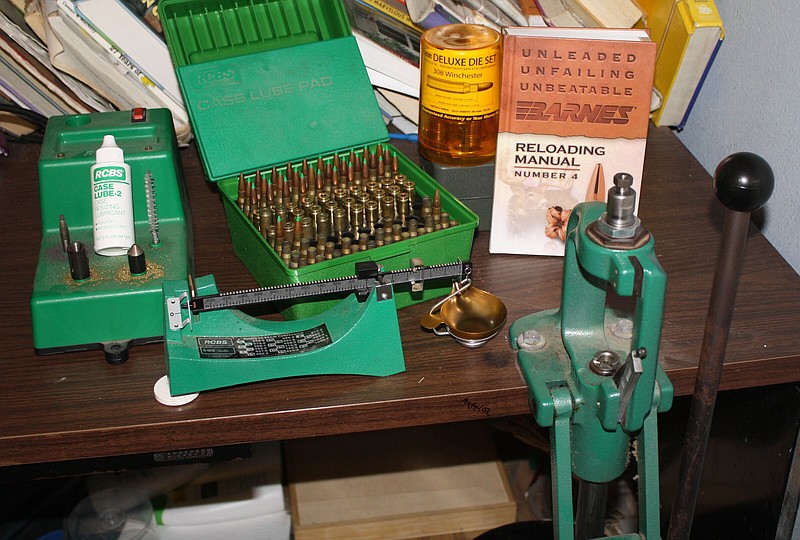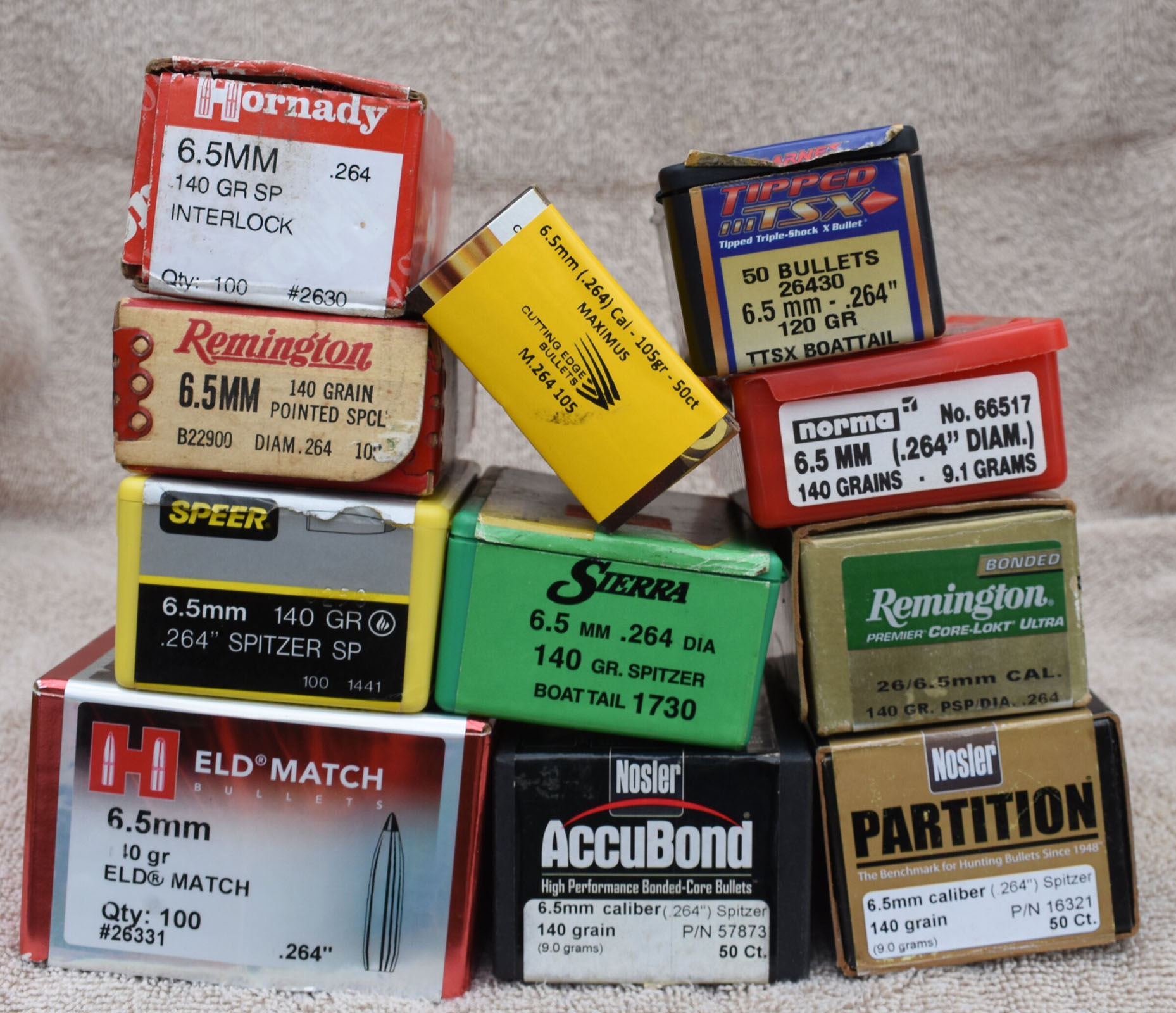The shooting world is aiming for long-range accuracy, and the reloading industry is ringing steel by offering specialty products.
For about two decades, AR-15 style rifles dominated the shooting industry. Owners liked their ability to fire a lot of ammo quickly. Cheap and accessible components enabled reloaders with progressive presses to manufacture .223 Rem./5.56 NATO rounds in bulk to supply voracious shooting appetites.
At the same time, a small segment of the shooting community pursued long-range precision with cartridges that have largely faded, such as 6.5-300 Weatherby, 6.5-284 Norma, 338 Lapua, and even 50 BMG. Those cartridges all have high-capacity cases that use prodigious amounts of powder.
Two things changed the landscape, said Robin Sharpless, executive vice-president of Redding Reloading Equipment in Cortland, N.Y. Shooters got older, and reloading components got scarce and more expensive. Shortages of powder, primers, and bullets ended the high-volume shooting era. The light-kicking 6.5 Creedmoor ended the shoulder cannon era.
"The trend overall is long range," Sharpless said. "We went from the period of black guns shooting lots of stuff to precision shooting and distance. We see it in new cartridges that have developed and evolved, and it starts with the 6.5 Creedmoor. Before that came along, you couldn't go out and buy something off the shelf that shoots accurately at 1,000 yards."
Besides a supply constriction with reloading components, a convergence of other factors contributed to the rise of small-capacity precision cartridges, which include the PRC and ARC families. First, Hornady and Hodgdon dedicated their muscle to developing the 6.5 Creedmoor, a cartridge that truly is inherently accurate due its uniform chamber specifications.
Also, thanks to the decreasing cost and increasing precision of CNC machining, manufacturers are making affordable barrels, receivers, and actions that would have been available only as custom builds 20 years ago.
Greater participation in competitive shooting turbocharged interest in reloading, which allows you to tailor loads to your specific rifle and application. Specialty powders like Hodgdon's SuperPerformance and Staball, which are tailored for 6.5 Creedmoor and its offspring, enhance the roster of generalist propellants like H4831, IMR-4064, and Reloader 22.
"We've always catered to those guys that want benchrest accuracy," Sharpless said. "It's all about building the ammo to get the most out of that rifle. There's no limitations to what you can do with your own ammo."
Quality dies, presses and case preparation tools are available from many companies like Redding, Lyman, Hornady, RCBS and Lee Precision. Redding specializes in elite reloading dies. Redding's Type S bushing style dies, competition seating and neck sizing dies, body dies, and its new Competition Shellholders are all products of benchrest competition and 1,000-yard competition, Sharpless said.
Really? "Competition" shellholders? Redding's Competition Shellholders come in five-piece sets in .002 increments from .002-.010. The shellholder adjusts headspace and enables you to adjust the shoulder bump to customize cases to your specific chamber.
"We identified a variable, we quantified that variable, and then we mitigated a strategy to eliminate or reduce the variable," Sharpless said. "That's what Competition Shellholders do. They give you a unique ability to custom headspace your cartridge case to your gun. It's one of the best things for accuracy."
Lee Precision is an innovative developer of inexpensive reloading tools that simplify the reloading process. John Lee, president of Lee Precision, said that interest in long-range precision accuracy has sparked a golden age of cartridge development. Reloading equipment manufacturers are equally competitive to win customers new to the sport.
"New cartridges come every single year," Lee said, "but what is amazing is the sheer size of the lot of the new cartridges that are oriented to long-range precision shooting."
An underrated and misunderstood item in Lee's lineup is its Factory Crimp Die. Lee said applying a factory crimp is one of the easiest things you can do to improve accuracy because it standardizes neck tension and start pressure.
"More than any other variable, there's nothing else you can do that improves accuracy more than uniform start pressure," Lee said. "With start pressure, you want a real uniform burn curve. If you don't have uniform start pressure, you get a start-stop type of pressure curve. You get a peak, then the pressure drops off, and it builds up again when the bullet is in rifling. That herky-jerky pressure doesn't do anything for accuracy."
Lee's Factory Crimp Die also mitigates the effect of bullet seating depth, Lee said.
"You can seat to a depth that's a ways from the rifling and crimp it, or you can seat a bullet out to touch the rifling," Lee said. "If you do that without a crimp, it creates a new problem. If you extract a live round, you stand a chance of the bullet sticking in the rifling. Then you spill powder into the action and into the trigger mechanism, and you extract an empty case."
Bullet manufacturers offer modern projectiles with very high ballistic coefficients. Hornady's ELD and Nosler's Accubond are very popular among reloaders for target shooting and hunting.
Lee said that an emerging complication is the trend toward lead-free bullets. Slugs made entirely of copper, for example, are longer for caliber than lead of the same weight because copper is lighter than lead. Manufacturers are making barrels with twist rates that accommodate longer bullets, but older rifles might not stabilize newer bullets.
Jerry Choate, owner of Jerry's Outdoor Supply in Tulsa, said modern twist rates create challenges for reloaders.
"A 1-in-10 twist in .30-cal. was the industry standard for years," Choate said. "Take a heavy Barnes bullet. That raises some concerns. Some of them look like javelins. Will it still stabilize in a 1:10 twist? I've seen examples that do not."
Like many shooters, Choate said he was initially skeptical about the 6.5 Creedmoor. It proved to be accurate, and it's a dream to reload.
"They did get the Creedmoor very right for lot of reasons," Choate said. "Its twist rate is appropriate to launch a projectile to shoot well, but its recoil isn't so bad that you're getting beat up. It has made a lot of folks a better shot."
Long-range precision shooting has staying power because component shortages are permanent. For example, stick powders are not made in the United States, Choate said. Powders, primers and other components must be imported, and a lot of things can delay shipments.
That's discouraging at face value, but really, the trend to long-range precision takes us back to a simpler era in reloading. Ten shots is a lot in an all-day long-range precision session. At that rate, a pound of powder and 200 primers will last a long time.


